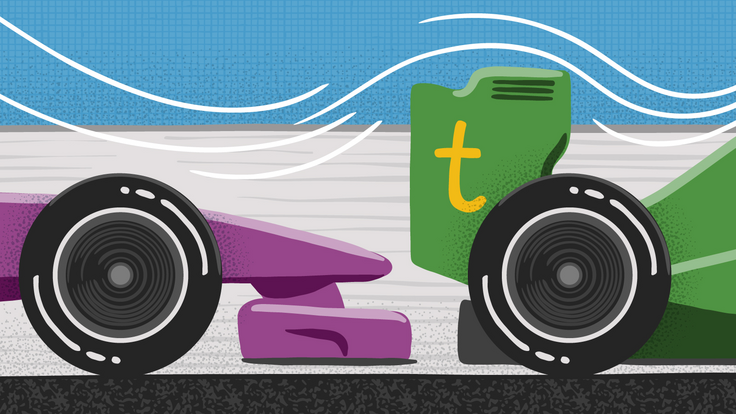
The Cockcroft-Walton pre-injectors. Image courtesy of Michael Monaxios.
This story first appeared in Fermilab Today on November 29, 2010.
Fermilab’s iconic Cockcroft-Waltons are on their last mission. In 2012, the elephantine generators will join the cyclotron magnet in the annals of accelerator history. This will make room for a top-of-the-line system only a few yards in length.
The new pre-injector, which will include a radio frequency quadrupole, or RFQ, is scheduled to be installed during the shutdown in 2012. Accelerator Division’s Bill Pellico expects the RFQs to be more reliable than the Cockcroft-Waltons and require less monitoring.
“On the operators’ side, it means fewer headaches and more uptime. On the physicists’ side, it means higher quality beam and lower losses,” Pellico said.
In the current system, after the initial beam is accelerated by a Cockcroft-Walton, it enters a device called a Drift Tube Linac (DTL) which converts it into little packets, or bunches, that are accelerated down the Linac. Between the Cockcroft-Walton and the DTL, much of the beam is lost. The RFQ, however, can both create bunches and accelerate them with increased efficiency. This could potentially increase luminosity.
In the 1980s, Fermilab joined with Brookhaven National Laboratory to design and order RFQs, but Fermilab decided not to proceed while Brookhaven went ahead.
“We’re not reinventing the wheel,” said Cheng-Yang Tan, who is leading the design effort on the project. “We are trying to copy as much as we can from Brookhaven, while using newer technology.”
Nonetheless, after the RFQ system arrives from Germany in early 2011, a team headed by Pellico, Tan and Dan Bollinger will spend the next six months calibrating and testing it on a dummy system they are constructing for this purpose. They want no surprises when experiments start back up.
“Since there are two Cockcroft-Waltons, we have a backup, but we only have one RFQ,” Pellico said. “We have to be sure it is more reliable:None of the downstream experiments will get beam if we have to work on the RFQ during normal operations.”
No word has arrived yet on where the Cockcroft-Waltons will end up, although they’ll almost certainly be preserved as a visitor attraction.
“I’d kind of like to use one as an office,” Pellico said.
Fermilab will host a Proton Source Workshop on Dec. 7 and 8 to discuss the RFQ system and other upgrades.






